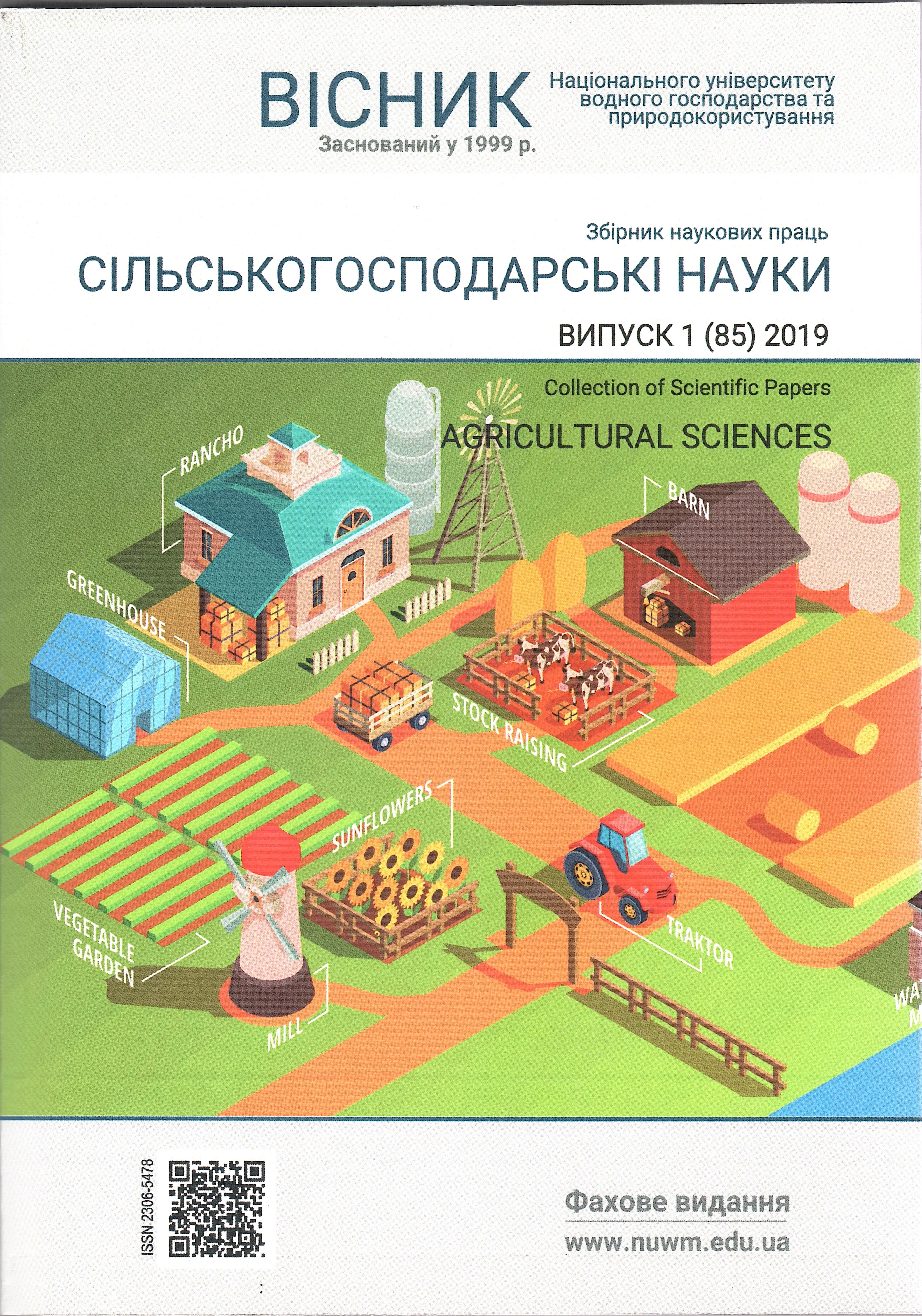USE OF BIOTECHNOLOGY IN THE HYDROPARK RESERVOIR IN RIVNE
Ключові слова:
biotechnology, higher aquatic plants, bioplateau, water quality, sewage, biological and engineering structureАнотація
The article substantiates the expediency of using biotechnologies in order to improve the quality of water in the hydropark and the Ustya river within the limits of Rivne. Conditions of surface runoff formation were investigated and the main factors determining the water quality in the reservoir were determined. The results of water quality assessment in the hydropark were presented. It was revealed that thebiggest contribution to the formation of water quality in the reservoir, as well as in the Ustya river, are heavy metals: iron, manganese, copper, zinc, and phosphates. The use of bioplateau as one of the types of biotechnology was proposed and a set of measures for improving the quality of water in the hydropark and Ustya river were presented.Посилання
Dunbabin J. S., Bowner K. H. Potential use of constructen wetlands for
treatment of industrial waster waters containing mettals. Sci. Total. Environ.
111, № 2/3. P. 56–60.
Gleichman-Verheyc E. G., Putten W. H., Vander L. Alvalwaterzuvering met helofytenfilters, een haalbaarheidsstudie. Tijdschr. Watervoorz. En. Efvalwaterbehande. 1992. 25, № 3. Р. 56–60.
Hosokova Yasuschi, Miyoshi Eiich, Fukukawa Keita. Характеристика процесса очистки прибрежных вод тростниковыми зарослями. Rept. Partand Harbour. Res. Inat. 1991. 30, № 11. P. 206–257.
Дин Яньхуа. Исследование образцового проекта системы очистки сточных вод – на увлажненных землях с зарослями тростника. Chim. J. Environ. Sci. 1992. 13, № 2. С. 813.
Blankenberg AG. B., Braskerud B. C. «LIERDAMMEN» – a wetland test field in Norway. Retention of nutrients, pesticides and sediments from a agriculture runoff. Diffuse Pollution Conference, Dublin, 2003.
Lloyd S. D, Fletcher T. D., Wong T. H. F., Wootton R. M (Australia). Assessment of Pollutant Removal Performancein a Biofiltration System. Preliminary Results, 2nd South Pacific Stormwater Conference; Rainthe Forgotten Resource, 27–29 June, 2001, Auckland, New Zealand. P. 20–30.
Hadlington Simon. Aninterest in dreed. Chem. Brit. 1991. 27, № 4. С. 229.
Dawson G. F., Loveridge R. F., Bone D. A. Gropproduction and sewaget reatmentusing gravelbed hydroponicer ridationIbid. 1989. 21, № 2. P. 57–64.
Samkaram Unni K., Philip S. Heavy metal uptake and accumulation by Thypha angustifolia from weltlands around thermal poweer station. Int. J. Ecol. And Environ. Sci. 1990. 16, № 2/3. Р. 133–144.
Короткевич Л. Г. К вопросу использования водоохранно очистных
свойств тростника обыкновенного. Вод. ресурсы. 1976. № 5. С. 198–204.
Тимофеева С. С. Биотехнология обезвреживания сточных вод. Химия и технология воды. 1995. Т. 17, № 5. С. 525–532.
Стольберг В. Ф., Ладыженский В. Н., Спирин А. И. Биоплато – эффективная малозатратная экотехнология очистки сточных вод. Екологія довкілля та безпека життєдіяльності. 2003, № 3. С. 32–34.
Dunbabin J. S., Bowner K. H. Potential use of constructen wetlands for
treatment of industrial waster waters containing mettals. Sci. Total. Environ. 1992. 111, № 2/3. P. 56–60.
Gleichman – Verheyc E. G., Putten W. H., Vander L. Alvalwaterzuvering met helofytenfilters, een haalbaarheidsstudie. Tijdschr. Watervoorz. En. Efvalwaterbehande. 1992. 25, № 3. R. 56–60.
Hosokova Yasuschi, Miyoshi Eiich, Fukukawa Keita. Kharakterіstіka protsessa ochіstkі prіbrezhnykh vod trostnіkovуmі zarosliamі. Rept. Partand Harbour. Res. Inat. 1991. 30, № 11. P. 206–257.
Dіn Yankhua. Іssledovanіe obraztsovoho proekta sіstemу ochіstkі stochnуkh vod – na uvlazhnennуkh zemliakh s zarosliamy trostnіka. Chim. J. Environ. Sci. 1992. 13, № 2. S. 813.
Blankenberg AG. B., Braskerud B. C. «LIERDAMMEN» – a wetland test field in Norway. Retention of nutrients, pesticides and sediments from a agriculture runoff. Diffuse Pollution Conference, Dublin, 2003.
Lloyd S. D, Fletcher T. D., Wong T. H. F., Wootton R. M (Australia). Assessment of Pollutant Removal Performancein a Biofiltration System. Preliminary Results, 2nd South Pacific Stormwater Conference; Rainthe Forgotten Resource, 27–29 June, 2001, Auckland, New Zealand. P. 20–30.
Hadlington Simon. Aninterest in dreed.Chem. Brit. 1991. 27, № 4. S. 229.
Dawson G. F., Loveridge R. F., Bone D. A. Gropproduction and sewaget reatmentusing gravelbed hydroponicer ridationIbid. 1989. 21, № 2. P. 57–64.
Samkaram Unni K., Philip S. Heavy metal uptake and accumulation by Thypha angustifolia from weltlands around thermal poweer station. Int. J. Ecol. And Environ. Sci. 1990. 16, № 2/3. R. 133–144.
Korotkevіch L. H. K voprosu іspolzovanіia vodookhranno ochіstnуkh
svoistv trostnіka obуknovennoho. Vod. resursу. 1976. № 5. S. 198–204.
Tіmofeeva S. S. Bіotekhnolohіia obezvrezhіvanіia stochnуkh vod. Khіmіia і
tekhnolohіia vodу. 1995. T. 17, № 5. S. 525–532.
Stolberh V. F., Ladуzhenskіi . N., Spіrіn A. І. Bіoplato – еffektіvnaia malozatratnaia еkotekhnolohіia ochіstkі stochnуkh vod. Ekolohiia dovkillia ta bezpeka zhyttiediialnosti. 2003, № 3. S. 32–34.

